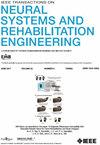听觉运动皮质刺激增强下行镇痛通路减轻小鼠慢性疼痛
IF 4.8
2区 医学
Q2 ENGINEERING, BIOMEDICAL
IEEE Transactions on Neural Systems and Rehabilitation Engineering
Pub Date : 2025-04-24
DOI:10.1109/TNSRE.2025.3564033
引用次数: 0
摘要
慢性疼痛造成相当大的健康风险,需要开发有效的治疗方法。运动皮层的物理调节已被证明有缓解疼痛的希望;然而,现有的方法需要侵入性电极植入或空间分辨率有限。因此,我们开发了一种非侵入性、高精度的声学运动皮质刺激(aMCS)系统来缓解慢性疼痛并探讨其机制。我们研制了一种可穿戴式aMCS系统,并采用神经保留损伤法(SNI)建立小鼠慢性疼痛模型。对不同声学参数的模型小鼠进行aMCS,系统评价其疼痛行为。随后,我们建立了一个长期的脊髓双光子系统来监测aMCS对脊髓背角(SCDH)神经元活动的影响。接下来,使用TRAP2-tdTomato小鼠来检测aMCS对运动皮质和下行镇痛通路其他区域的影响。最后,我们通过磁共振成像、组织学和温度监测来评估aMCS的安全性。具有特定参数的aMCS可显著改善慢性疼痛小鼠模型的疼痛行为。双光子钙成像显示aMCS降低了SCDH的神经元活动强度。对TRAP2-tdTomato小鼠的活动图谱显示,aMCS增强了初级运动皮层和无椎带的神经元活动,而降低了外侧导水管周围灰质和SCDH的神经元活动。安全评估证实了对增产区域没有有害影响。aMCS通过潜在地增强下行镇痛通路,为缓解慢性疼痛提供了一种新颖、无创、有效的方法。本文章由计算机程序翻译,如有差异,请以英文原文为准。
Acoustic Motor Cortex Stimulation Enhances the Descending Analgesic Pathway to Alleviate Chronic Pain in Mice
Chronic pain poses considerable health risks, necessitating the development of effective treatments. Physical modulation of the motor cortex has demonstrated promise for pain relief; however, existing methods require invasive electrode implantation or have limited spatial resolution. Therefore, we developed a non-invasive, high-precision acoustic motor cortex stimulation (aMCS) system to alleviate chronic pain and explore its mechanisms. We developed a wearable aMCS system and employed the spared nerve injury (SNI) method to establish a mouse model of chronic pain. The model mice underwent aMCS with different acoustic parameters, and their pain behaviors were systematically evaluated. Subsequently, we established a long-term spinal cord two-photon system to monitor the effects of aMCS on spinal cord dorsal horn (SCDH) neuronal activity. Next, TRAP2-tdTomato mice were used to examine the effects of aMCS on the motor cortex and other regions of the descending analgesic pathway. Finally, we conducted magnetic resonance imaging, histology, and temperature monitoring to evaluate the safety of aMCS. aMCS with specific parameters significantly ameliorated pain behaviors in a mouse model of chronic pain. Two-photon calcium imaging indicated that aMCS reduced the intensity of neuronal activity in SCDH. Activity mapping in TRAP2-tdTomato mice revealed that aMCS enhanced neuronal activity in the primary motor cortex and zona incerta while diminishing it in the lateral periaqueductal gray and SCDH. Safety assessments confirmed the absence of deleterious effects on the stimulated region. aMCS provides a novel, non-invasive and effective approach to alleviating chronic pain by potentially enhancing the descending analgesic pathway.
求助全文
通过发布文献求助,成功后即可免费获取论文全文。
去求助
来源期刊
CiteScore
8.60
自引率
8.20%
发文量
479
审稿时长
6-12 weeks
期刊介绍:
Rehabilitative and neural aspects of biomedical engineering, including functional electrical stimulation, acoustic dynamics, human performance measurement and analysis, nerve stimulation, electromyography, motor control and stimulation; and hardware and software applications for rehabilitation engineering and assistive devices.

 求助内容:
求助内容: 应助结果提醒方式:
应助结果提醒方式:


